What happens if you overwater a plant?
Plants need water. This basic fact is known to everyone, But if you water too much it can do more harm than not giving enough. A dry plant can always be given more water, but the presence of excess moisture can cause a number of serious problems.
The first signs that a plant is being overwatered are wilting and defoliation. Wilting is a general drooping of the plant, while defoliation causes leaves to yellow, wilt, and fall off.
Many novice gardeners attribute This is due to a lack of water and makes the situation worse by adding more. If in doubt, you should check the soil. If it's dry, it would be a good idea add water, but don't do it if it's damp or wet.
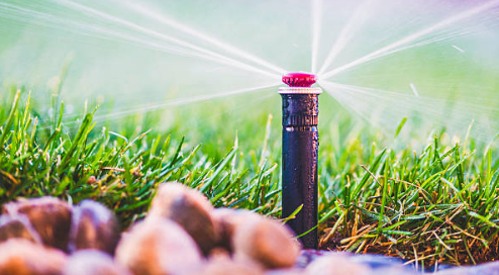
Symptoms that occur present if you overwater a plant
It is necessary to know how to recognize when there is excess watering, here we briefly describe it:
Disease
Many diseases and molds thrive in a humid environment. Crown rot, Phytium, and Phytophthora are just three diseases that are attracted to excess moisture. humidity. Once these diseases and molds take hold, they are very difficult to eliminate.
Drowning
Because plants do not have lungs to carry oxygen to their cells, they are covered with tiny pores called stomata. These stomata allow oxygen to diffuse into a plant and carbon dioxide to diffuse out.
Stomata cover all areas of a plant, including the roots. Overwatering causes these stomata to become blocked, impeding gas exchange and eventually killing the plant.
Rot of the roots
When a plant is overwatered, a highly saturated environment is created, and the plant's roots will gradually begin to rot. This process occurs while the plant is still alive, gradually reducing its root system and subsequently the specimen dies.
Large plants with roots in decomposition They are unable to support themselves and will eventually fall off.
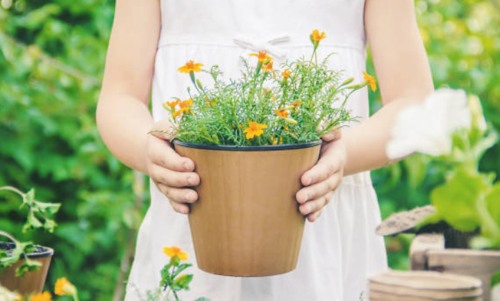
How to avoid damage from bad irrigation?
Avoid damage from human error in overwatering your garden, It is solved by implementing the wide variety of options and tools available on the market; these are irrigation controllers.
Low-tech autonomous controllers are typically just a timer. They provide no input or weather warning and typically result in excessive waste of vital liquid, even leading to the loss of the landscape due to over-irrigation.
A simple solution to this is to install a rain sensor. Commonly activated by expanding discs or a container, The rain sensor is connected to an automatic sprinkler system so that it does not irrigate the garden directly after a good rain.
5 Models of rain sensors
We present 5 excellent options for rain sensors:
1- Orbit Adjustable Rain Sensor
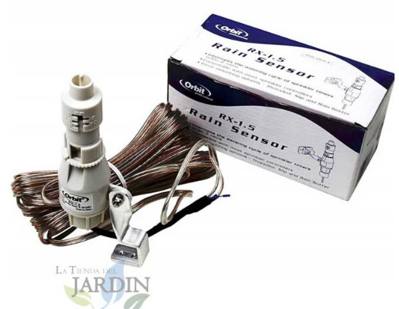
Orbit's RX Series rain sensors make water management easy. The RX-1.5's easy-to-set design will turn off sprinklers during rainstorms.
Hygroscopic discs absorb water to activate the rain switch. Designed for use with all types of 24-volt controllers. It has three mounting options: threaded, sliding and rain gutter.
2- SRain-Clik Hunter rain sensor
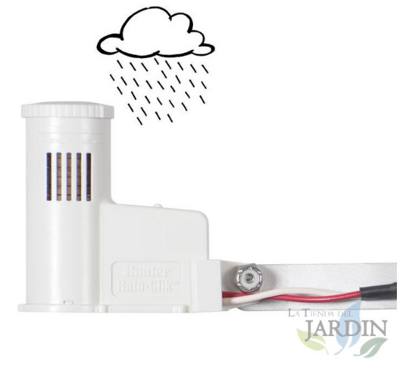
With built-in rapid response technology, the Hunter Rain-Clik can command a controller to turn off just as it starts to rain. The Rain-Clik can be mounted on an eave or any flat vertical surface such as a wall or fence.
3- Wind and rain weather station, MWS Hunter
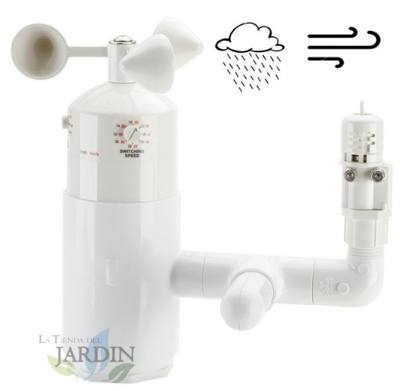
Easy to install in any automatic irrigation system - Versatile enough to meet your particular needs. Heavy Duty Construction - Built tough for years of trouble-free operation.
Turns off the system in rainy conditions - Adjusts from 0.3 cm to 2.5 cm depending on local conditions
4- Rain Bird WR2 Wireless Rain and Frost Sensor
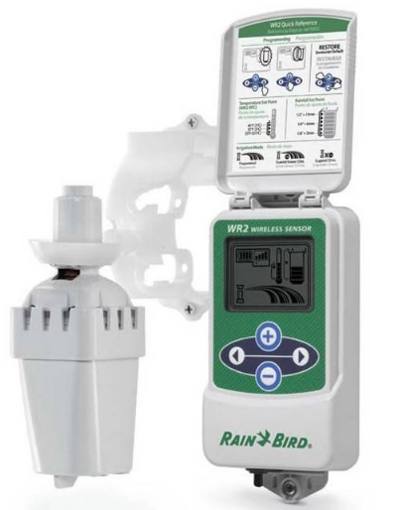
The wireless rain sensor shuts off irrigation when it rains. The freeze sensor shuts off irrigation when the temperature drops below the set point.
Save up to 35% on water usage. Intuitive, icon-driven interface for easy programming. The sensor bracket is easy to install and mounts on flat surfaces or rain gutters.
5- Hunter Mini-Clik Rain Sensor
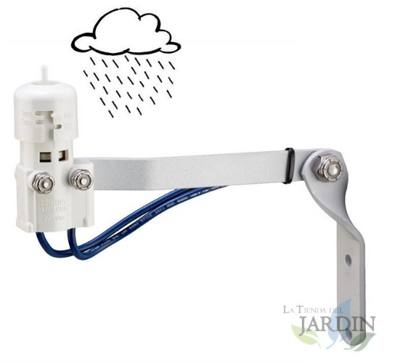
This rain sensor unit is designed for use with automatic irrigation systems of two main designs:
§ Electric timer that switches power to a pump directly.
§ A single station electric timer that switches power to a solenoid valve.
Types of sensors rain
Basically these are the types of sensors you can find:
Cube of tip
The tipping bucket rain gauge is not much different than a seesaw on a playground. Water collected along the surface of the rain gauge is channeled to one side of a two-sided plate that sits on an axle.
The dish tilts when one side fills with water, causing the first side to tip over and the second side to begin filling.
Electrode
This type of rain sensor electrode relies on water's ability to conduct electricity. It consists of two metal probes, which extend into a basin where precipitation is collected.
The sensor stops irrigation when the probes interact with the water. The water evaporates from the basin to stop contact with the probes and allow irrigation to resume.
Disc of expansion
The sensor works by using approximately six discs made of a cork material, which expand as it absorbs moisture from the rain.
The pressure that expands the cork material opens the electrical circuit, stopping the current from the irrigation controller to the valves. The cork material shrinks as it dries, closing the circuit again and restoring the spray.
Discover How to choose the grass for my pool
Advantages of having sensors in your garden
Having rain sensors brings great advantages, such as:
Conserve water
The sensor that is activated by adequate rainfall will send a signal to the irrigation controller and turn off any set timers. As a result, sprinklers won't waste water on an already saturated yard.
Prevents garden damage
Plant roots cannot stand being flooded. Unregulated sprinkler systems will continue to water, and this excess water can lead to root rot and plant disease from invading pathogens.
Using rain sensors prevents plants from becoming flooded by the combined use of rain and sprinklers.
What are the benefits of having a water tank
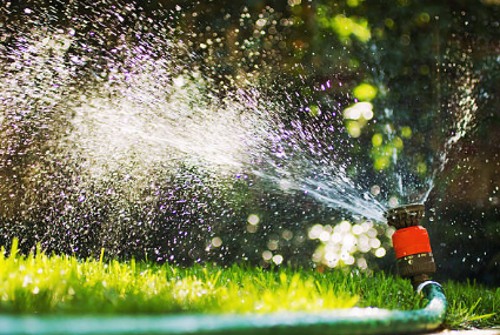
Increases the lifespan of the irrigation system
Water is naturally corrosive. Although irrigation systems are designed with rust-resistant properties, the constant flow of water through the system will shorten its lifespan.
Using rain sensors will allow sprinklers and drip lines to rest during the rainy season; more rain in an area will result in a longer lifespan for the irrigation system because it isn't moving water through its assemblies at a constant rate.
Save money
Along with saving water, rain sensors can save you money. Water bills can be substantial, depending on where you live. Large gardens can consume more water per month than all the fixtures in the home combined.
Avoiding periodic sprinkling after rain with sensors can save you money on your water bill.
The rain sensor will reduce the loss of difficult landscapes
Difficult landscapes are the non-living parts of your landscape, such as your rock walls and patios. Watering exactly where your plants are helps you reduce the loss of difficult landscapes.
Replacing and maintaining difficult landscapes that are cracking and eroding from irrigation is expensive, not to mention the amount of water wasted.
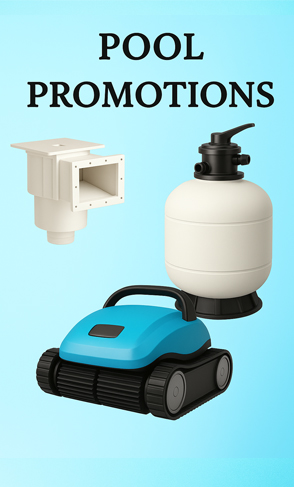




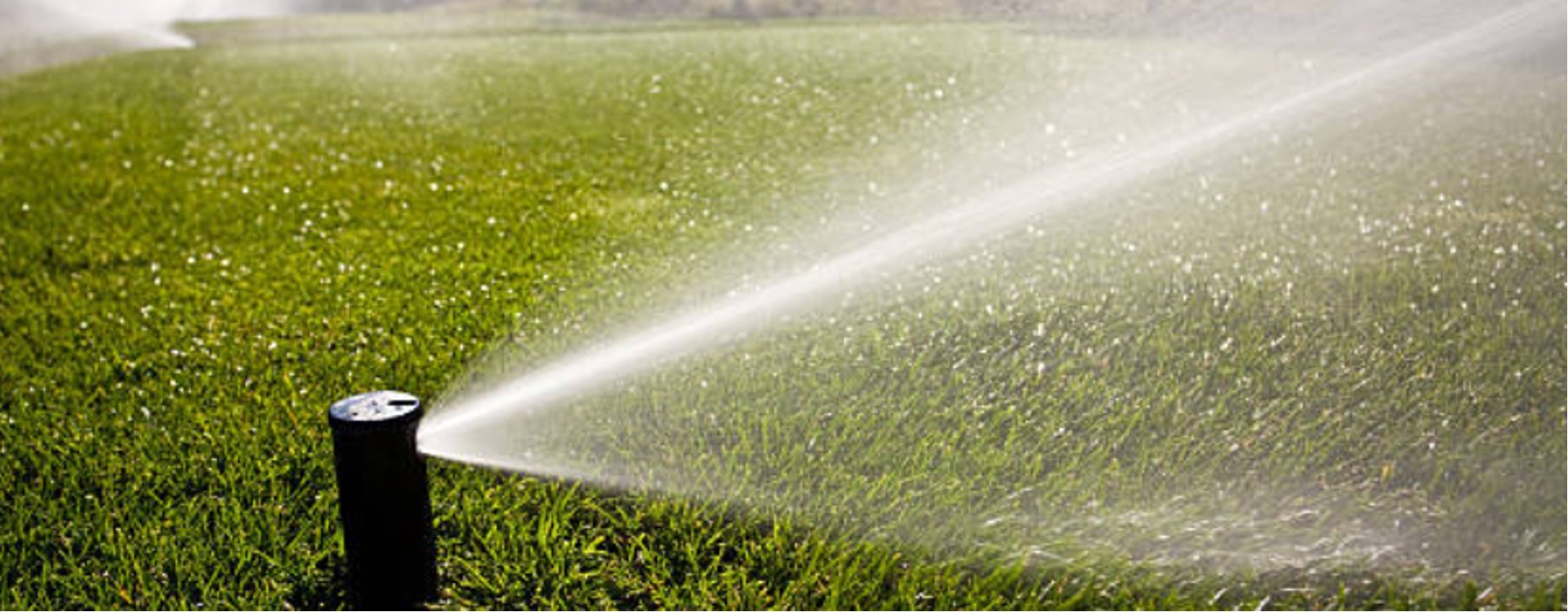

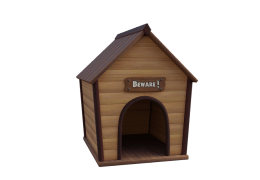

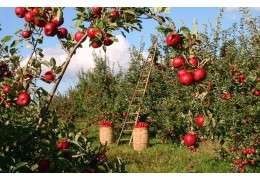

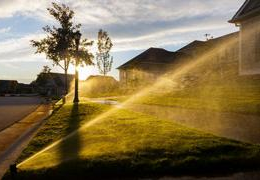
Leave a comment